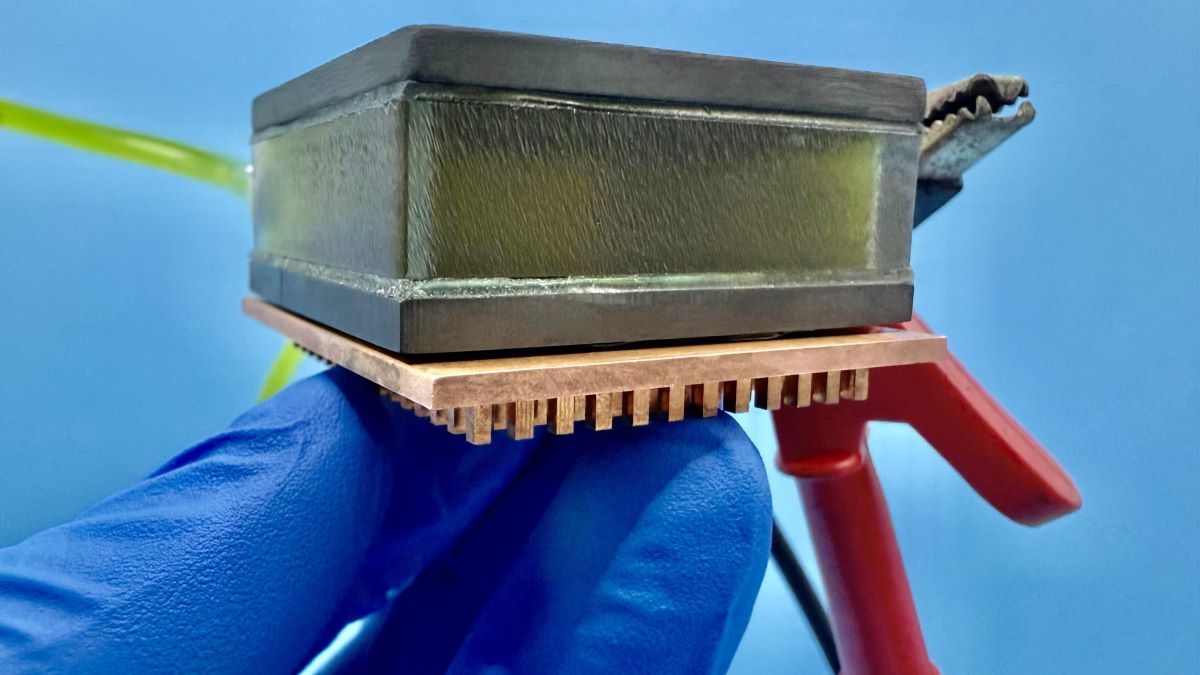Discover breakthrough thermogalvanic technology that uses advanced electrolytes and charged iron atoms to achieve record cooling performance—paving the way for more efficient and eco-friendly refrigerators.
Key Points at a Glance:
- Novel thermogalvanic cells achieve a record cooling improvement of 1.42°C.
- Advanced electrolyte design uses a chlorine-containing iron salt with nitrile solutions.
- Reversible chemical reactions harness electricity to remove heat.
- Potential for scalable, low-power cooling solutions and clean energy applications.
- Future prototypes and industry collaborations aim to commercialize this innovative technology.
Researchers from Huazhong University of Science and Technology in China have unveiled a promising breakthrough in cooling technology that could transform the way refrigerators operate. This innovative approach leverages thermogalvanic cells—a technology traditionally used to convert heat into electricity—in reverse, using electrical energy to remove heat from a system. While the current prototype cools by a modest 1.42°C, a significant leap from the previous record of 0.1°C, the researchers are optimistic about its potential for scaling up and achieving broader applications.
At the core of this breakthrough is a carefully engineered electrolyte that utilizes charged iron atoms. In the process, these iron atoms absorb heat when they gain electrons from an applied electrical current and subsequently release heat into a designated heat sink as they lose electrons. This reversible chemical reaction forms the basis of the cooling effect observed in the prototype thermogalvanic refrigerator. To optimize this reaction, the research team experimented with various substances and ultimately determined that a combination of a chlorine-containing iron salt and a solution of nitriles (nitrogen and carbon-based compounds) produced the best results, allowing the system to achieve its record cooling performance.
The significance of this technology extends well beyond the immediate temperature drop. Traditionally, thermogalvanic cells are employed to generate electricity from heat differences; however, reversing this process to actively remove heat represents a novel application. As noted by senior author Jiangjiang Duan, this advancement paves the way for the development of low-power cooling systems that are not only more efficient but also more environmentally friendly. With the global push towards reducing energy consumption and minimizing carbon footprints, such innovations in cooling technology are increasingly vital.
Although a cooling improvement of 1.42°C might appear modest in isolation, it marks a tenfold improvement over earlier designs, which managed only a 0.1°C reduction. This dramatic enhancement is a clear indicator that the underlying design strategy—focused on optimizing thermogalvanic electrolytes—holds substantial promise. However, Duan and his colleagues acknowledge that additional work is necessary. They stress that further improvements in system-level design, scalability, and long-term stability are essential before this technology can be commercialized and integrated into everyday appliances such as refrigerators.
Looking to the future, the research team is committed to exploring novel mechanisms and advanced materials that could further boost cooling performance. They are already developing diverse refrigerator prototypes tailored to various application scenarios, and active discussions with innovation companies are underway to promote the commercialization of thermogalvanic technologies. Beyond the realm of refrigeration, the principles demonstrated by this work could also spur advancements in clean electricity generation, making the technology doubly beneficial in an era increasingly focused on sustainability.
This pioneering work represents a significant step forward in the field of energy-efficient cooling. By harnessing the unique properties of thermogalvanic cells in a new and innovative way, researchers are challenging conventional cooling paradigms and opening the door to greener, more sustainable appliance technologies. With continued research and collaboration between academia and industry, the prospect of integrating this breakthrough into commercially viable products is on the horizon—a development that could revolutionize not only household refrigeration but also a wide array of cooling applications in the future.
